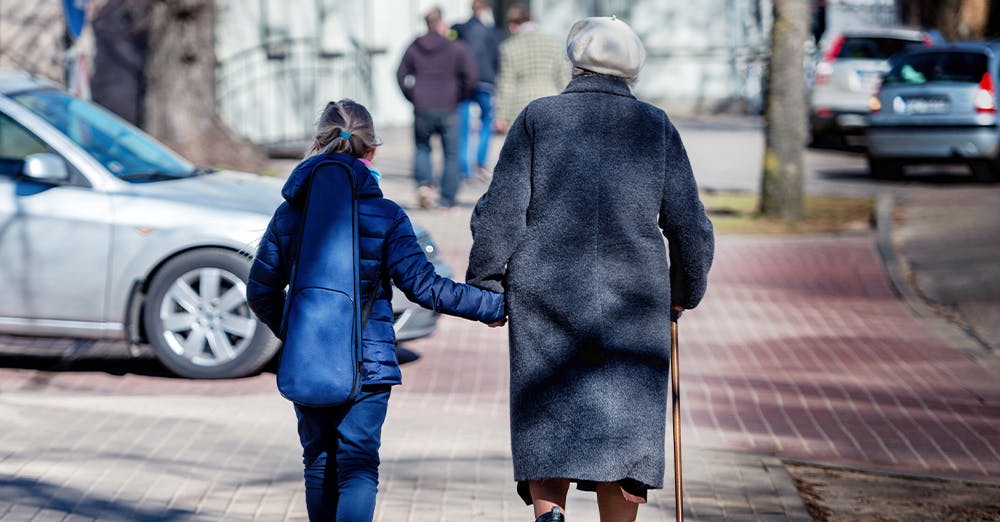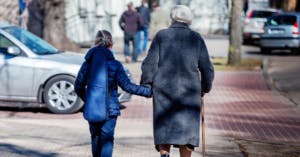What is Osteoporosis and How Does it Affect Seniors?


Osteoporosis, a word that means porous bones, is a medical condition that occurs when bones lose mass and density.
Bones are living tissues that are in a constant cycle of break down and renewal; when the pace of creating new bone doesn’t keep up with the pace of losing bone, osteoporosis ensues. Whether osteoporosis is caused by a slowdown in the growth of new bone or by accelerated bone loss, the results are the same: brittle bones that break easily. Hips, wrists, and vertebrae are the most likely to be adversely affected by osteoporosis.
Osteoporosis is a largely silent disease. In the early stages, osteoporosis has no symptoms, but, as bones lose more mass and more density, patients begin to show symptoms, which include the following:
- Back pain caused by vertebral fractures
- Stooped posture
- Curved spine
- Height loss
- Frequent bone fractures, often occurring with little or no provocation
Who Gets Osteoporosis?
Osteoporosis is common. It’s estimated that over 50 million Americans have low bone mass, placing them at high risk for developing this debilitating condition have low bone mass, placing them at high risk for developing this debilitating condition. That translates to about 50% of women and 25% of men who will break a bone because of osteoporosis.
Some risk factors are “built in” and can’t be changed.
- Women get osteoporosis at twice the rate of men.
- You can’t turn back the clock; with greater age comes a greater risk
- Caucasians and Asians come wired with a predisposition towards bone loss.
- Osteoporosis runs in families.
- Frame size. Women, and men, with small body frames often develop osteoporosis as they have lower bone mass to being with.
- Medical conditions. A number of medical conditions also increase the risk of osteoporosis, including celiac disease, IBS, cancer, lupus, weight loss surgeries, eating disorders, and kidney and liver disease, just to name a few.
Some hormone levels and medications can also put you at risk for osteoporosis.
- Low sex hormones in men and women weaken bone. In fact, low estrogen as a result of menopause is one of the strongest risk factors.
- High thyroid hormone levels, either from an overactive thyroid or from too much thyroid medication, cause bones to weaken.
- Overactive parathyroid and adrenal glands are also associated with bone loss.
- Corticosteroid medications used long term interfere with bone growth, leading to osteoporosis.
- Seizure medications, reflux meds, cancer drugs, and transplant rejection medications have also been shown to decrease bone density.
As if these risk factors weren’t enough, a number of personal choices contribute to osteoporosis, including living a sedentary life, consuming excess alcohol, and smoking.
Osteoporosis and Seniors
A quick glance through the varied risk factors makes it clear why osteoporosis affects seniors; age, illness, hormones, and lifestyle all put people over 50 squarely on the path to bone loss. The impact of this disease on the lives of seniors is significant.
Pain
Bone fractures are painful. Patients with osteoporosis experience frequent breaks and are often in constant, unrelieved pain.
Limited Mobility
Constant pain has an adverse effect on mobility. It’s difficult to get up and move with a back or hip fracture and recovery can take a long time. Reduced mobility leads to a number of other health problems and makes osteoporosis worse.
Heavy Financial Burdens
Osteoporosis is expensive. Treating the disease, caring for the breaks, and ministering to the side effects use up valuable and often scarce resources. Many osteoporosis patients require full-time care in a nursing home or from an in-home caregiver.
Depression
Many people with osteoporosis experience depression and feelings of isolation as a result of the pain and their limited mobility. The constant pain and the financial burdens can also affect the patient’s sense of mental well-being.
Death
Osteoporosis in and of itself is not a fatal disease, but for 20% of seniors afflicted with osteoporosis who break a hip, death is unfortunately the result. Surgeries and their ensuing complications take their toll and are all too often too much for seniors to handle.
You Can Live a Good Life with Osteoporosis
Osteoporosis may seem grim, but with careful, consistent care, it’s possible to live a full and happy life with the disease. Good nutrition, plenty of vitamin D and calcium, and regular exercise focusing on strength and balance can slow the progression of the disease. In addition, there are a number of excellent medical treatment options available to help improve bone density. Talk to your doctor about your bone health and what steps you need to take to keep you on your feet and feeling great.
When regular, daily care is needed, skilled, knowledgeable, and compassionate 24-hour care givers from 24 Hour Home Care can make all the difference. Our staff provides specialized care for osteoporosis patients that goes over and above expectations. We help osteoporosis patients manage their pain and get moving again, helping them to stay physically and mentally strong. Our warm and friendly caregivers help with nutrition and exercise while providing much needed companionship.
Osteoporosis is not the end of the road. With 24 Hour Home Care, you can maintain your quality of life. For more information about the services we provide to patients with osteoporosis, visit our website or call to talk to one of our team members.
